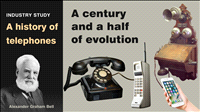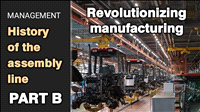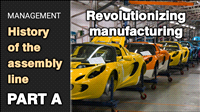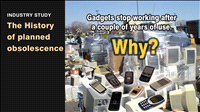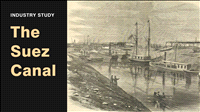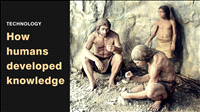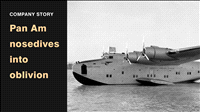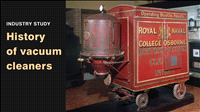History of vacuum cleaners | Home appliances | Industry Study
By Kiron Kasbekar | 07 Nov 2022
Today I am going to talk about the history of vacuum cleaners, the gadgets that most middle class households take for granted, which were launched very early in the last century and represented a qualitative change in the cleaning of homes and offices.
People walking in some of the richer parts of London in the year 1901 – more than a hundred and twenty years ago – would have been, I imagine, startled by the sight and sound of a strange machine rolling up and down the streets on a horse-driven cart. The first time they saw this machine.
These passers-by would have wondered what the machine was, making a loud gurgling, groaning, grumbling sound. And what those pipes were, leading out of the machine and into the doors and windows of the house outside which it was parked?
Well, it was among the first vacuum cleaning machines in the world. It was the device made by Hubert Cecil Booth, its inventor, cleaning the carpets of the city’s rich. As you can well imagine, when you see a picture of this first vacuum cleaner, the machine was nothing like the vacuum cleaners we use today. It was too big to carry into a house. The machine had to be parked outside, and the pipes that sucked the dust were taken into the house to do what had to attack the dirt.
Having finished with one house, the machine would trundle on to the next house that had called for such cleaning.
For centuries people used dust cloths, brushes, brooms and buckets to clean their kitchens, furniture and floors.
The problem was not that it took a huge amount of time. The problem was that in many cases, except when people used wet cloth to wipe surfaces, they were merely blowing dust away from one place in a room, for it to fly off and settle in another place.
Swabbing floors could also be back-breaking if there was a lot of floor space to clean.
Then a little more than a century and a quarter ago, cleaning gadgets were made – but they merely brushed or blew dirt away from one place to another.
And that too was a problem for some people, especially if they had ailments like asthma. They would choke on the dust that flew around.
A little more than a century and a quarter ago, cleaning gadgets began to be made – but they too merely brushed or blew dirt away from one place to another.
Then, one day in 1901, a man named Hubert Cecil Booth happened to attend a demonstration of one such machine by its American inventor, John S. Thurman, at the Empire Music Hall in London.
Thurman had patented what he called a “pneumatic carpet-renovator”, which was powered by a motor, which replaced the human effort of doing the cleaning. Thurman was sometimes credited with the invention of the vacuum cleaner … but what he had invented was not anything like a vacuum cleaner. It was, of course, supposed to clean floors and stuff, but his machine did exactly the opposite of what a vacuum cleaner does.
Thurman’s machine removed dust from carpets with the help of jets of compressed air. Where people earlier had to beat a rug with a stick or a paddle, this machine did the job by using compressed air like a mechanical rug beater.
These machines would be transported in horse-drawn carriages, which would go to customers’ homes and clean the carpets on location.
Here is the wording in an ad about the cleaning services of one of these horse drawn carpet dusters:
“Our portable engine and air compressor mounted on a strong truck arrives at your residence or other building to be cleaned in the morning. A small hose is run into the house, the tools are coupled up, which compresses some 75 feet of free pure outdoor air per minute at a high pressure which is conveyed through our patented tools to the articles to be cleaned. Nothing is taken from the premises. Carpets are cleaned right on the floor where they belong.”
Now you might laugh at the ad copy. I was particularly amused by the words ‘some 75 feet of free pure outdoor air’. A claim that outdoor air is cleaner than the air inside a house is itself a problem. And when did people start measure air in feet? I thought if you had to measure a volume of air, you’d use the term ‘cubic feet’, not feet!
It reminded me of a time many, many years ago, when I would go out for an evening walk. At King’s Circle, about half a mile from my place, I’d stop and buy a glass of hot milk from a milk shop.
The shopkeeper would use a metal jug to scoop the required quantity of milk from a huge pan of steaming, boiling milk, take an empty jug in the other hand, and then fling the milk from one jug from one outstretched arm to the other for a minute or two to mix the sugar he’d added, and to cool it down a bit. The milk stream that went unerringly from one jug to the other without spilling looked like a thick white band being juggled between two points. I’d joke with him, saying, give me three feet of that!
Thurman’s claim about 75 feet of clean air reminded me of that. Except that you can still measure a stream of hot milk in feet. You simply cannot measure air in feet! It has to be cubic feet, especially when it is contained in a pipe.
Anyway, I don’t think Booth was concerned about how you measure air. When he saw the demonstration of the machine, and how it blew dust off carpets and into a collecting bag, he thought it was a ridiculous idea because it simply redistributed the dirt by blowing it off the carpets.
So he came up with a solution that did exactly the opposite. Instead of blowing dust away, it sucked the dust into a bag through a filter.
It took him some time, sometimes choking on dust as his trial machines attempted to pull the dust in, for Booth to make it work.
Funny, or amateurish as this may sound, Booth first tested the idea by spreading a handkerchief on a restaurant chair seat, placing his mouth over the handkerchief, and then trying to suck up dust onto the handkerchief.
It worked! After some tinkering around and experimentation, Booth created a machine driven by a petrol-powered internal combustion engine, which did the sucking in far more powerfully than his mouth could.
Booth's first petrol-powered vacuum cleaner used a piston pump to draw in air through a cloth filter, and was nicknamed the ‘Puffing Billy’.
Puffing Billy was truly a puffed-up thing. It was so big, it had to be moved on a horse-drawn carriage!
Puffing Billy did not use any brushes; it did all the cleaning by suction through long tubes with nozzles on the ends, which would be manipulated through various windows and doors and in and out of various rooms. That was, of course, required because the machine was too bulky to be brought into a building. And several workmen had to be deployed to haul the pipes into a house or office and move them around.
Still, the principles on which it worked were essentially the same as modern vacuum cleaners.
Soon afterwards, Booth introduced an electric-powered model. But this too was very bulky, and had to be moved by a horse-drawn carriage.
Booth created a company to market his invention, and it was in the prospectus of this company, British Vacuum Cleaner Company (now BVC), that the term ‘vacuum cleaner’ was first used. The machine he launched through this company was called ‘Goblin’.
Given the size of Booth’s machine, a monster of a machine compared with the vacuum cleaners we use today, it was natural that he did not initially try to sell the machine – what he did was to sell cleaning services.
The machine's powerful petrol-powered generator had to be large — and loud. Given its size, the machine had to remain outside the home to be cleaned, attached to hoses as much as 82 feet in length.
Uniformed cleaners would drag hoses out of the company’s bright red vans and take them through the building’s windows to reach the rooms inside.
And if that was one bit of a hassle, there was another. The machine made a harsh reverberating sound that irritated the hell out of people around.
Booth received many complaints initially about the noise his machines made. Those complaints died out as news spread about how his product was being appreciated by a distinguished clientele.
Now Booth was as smart a salesman as he was an inventor. He realized that he needed to give a demonstration of the gadget before a captive audience. So he persuaded a local restaurant owner to allow him clean the dining room for free. The restaurateur readily agreed. And dozens of the restaurant’s patrons saw the machine working.
News of Booth's new contraption quickly reached the palace, and Booth bagged the job of cleannig the carpet running down the center aisle of Westminister Abbey in preparation for the coronation of Edward VII and Queen Alexandra in 1902.
That led to further royal patronage. In October 1902 Booth visited Buckingham Palace and showed the king and queen of England the vacuum cleaning process. They were utterly delighted to see the machine work, and immediately asked him to have his vacuum cleaners installed in the palace. Soon Booth installed a cleaning machine in Windsor Castle. Each of these machines fetching the equivalent of thousands of pounds, a princely sum those days.
Soon the big-name users of Booth’s machines included the British Parliament, Imperial Chemical House, and the Bank of England. And he began to count many other royal palaces across Europe among his clients. His business then extended to banks as far as in Australia.
Elsewhere, Booth's company built up revenues by hiring out its cleaning services on a subscription basis. Uniformed vacuum operators would make regular scheduled cleaning visits through the city.
By the 1930s, many public buildings were equipped with dozens of centralized vacuum cleaners that used a common extraction system.
These centralized systems included an air exhaust, a dust filter (with a detachable dust container), and wrought iron pipes running through the building, to which flexible hoses could be fitted for use in individual rooms.
What you see here This is the original Booth trolley vacuum cleaner, used by the Royal Naval College, Osborne, around the year 1905
//Kiron said something about image here. noted.
The problem with Booth’s invention was that it was not compact and could not become a home-use gadget. What it did do was spark off a race to create improved vacuum cleaners for home-use.
Right through the early 1900s, many engineers and inventors across the world submitted patents to try and profit from this innovation.
But the person who succeeded was 60-year-old James Murray Spangler, a department store janitor and hobbyist inventor in Canton, Ohio. Spangler invented the first compact, ready-for-home-use vacuum cleaner.
The asthmatic Spangler’s job was dusting and sweeping every nook and corner of the shop, and he kept getting asthma attacks while working. Not one to give up, Spangler made his own vacuum cleaner. And how did he do it?
He used a tin soap box, a sateen pillowcase and, and a broom handle. The broom handle held the soap box and the pillow case together. The soap box contained an electric motor taken from a sewing machine, which powered a fan and a rotating brush. And the pillowcase acted as a dust collector.
The crudely-made machine collected dirt and blew it out the back, where it was caught by an attached dust bag (the pillowcase).
Believe it or not, Spangler’s machine, which became known as the ‘suction sweeper’ worked! And worked well!
Not only was Spangler able to clean the entire building, his asthma spells reduced. He then tried to improve his design and to patent it. He was awarded a patent in 1908, and began selling the machines.
Although the machines drew a great deal of attention and encouraging sales, Spangler didn’t have enough capital to build a factory to scale up production. Some funds he had managed to raise were quickly exhausted.
Fortunately for Spangler, a cousin, Susan Hoover, had bought the machine and was very happy with it. The machine drew the attention of her husband, William Hoover.
William Hoover was in the leather goods business, making products like leather harnesses for horse-drawn carriages. But he was facing an uncertain future as the new and rapidly growing automobile industry began to eat into his business.
More cars, fewer horse-drawn carriages, and therefore less and less demand for leather harnesses. He needed to diversify. And soon.
Hoover realized the business potential of Spangler’s invention; what’s more, he had the money to mass-produce and market it.
So he acquired the rights to Spangler’s patent, formed a partnership with him, and began mass production of the ‘suction sweeper’.
Hoover was also an excellent marketer. He launched a plan for salesmen going door to door to demonstrate how the vacuum cleaner worked. And he ran newspaper ads in the Saturday Evening Post offering customers a free, 10-day trial with the machine. Not satisfied with it? Just return it, free of cost.
By 1912, Hoover’s firm had built a solid market position for itself, and people began calling the gadget a ‘hoover’. That name, ‘hoover’ persisted for some time and was also used for vacuum cleaners made by Hoover’s rivals.
It’s yet another example of how brand names acquire generic status.
After Hoover, many other firms entered this business. Many fell by the wayside. And even those that succeeded first lost momentum and shut down, and only a few big companies are left.
I shall look at these companies in another video, where I’ll also talk about where the industry stands today.
Well, that brings me to the end of this story.










